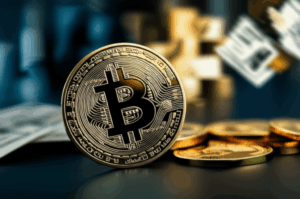Bitcoin: Inflows Keep Bull Case Alive Despite Middle East Conflict, Fed Risks
In a financial landscape often characterized by volatility and swift reactions to global events, Bitcoin has once again demonstrated a remarkable resilience. The world’s leading cryptocurrency, long a barometer for the broader digital asset market, continues to attract significant capital inflows, thereby reinforcing its “bull case” – the argument for sustained price appreciation. This trend is particularly noteworthy given the persistent headwinds from escalating geopolitical tensions in the Middle East and ongoing uncertainties surrounding the Federal Reserve’s monetary policy decisions. While traditionally, such factors might trigger a flight from risk assets, Bitcoin’s performance suggests a maturing investor base and a compelling alternative narrative at play.
The core of Bitcoin’s current strength lies in its ability to draw substantial investment, especially through newly launched spot Exchange-Traded Funds (ETFs) in the United States. These investment vehicles have democratized access to Bitcoin for a wider range of institutional and retail investors, translating into billions of dollars in net inflows since their inception. This consistent demand acts as a powerful counterweight to external pressures, absorbing potential selling pressure and underpinning price stability, if not outright growth. Industry analysts point to a confluence of factors driving this demand: a growing institutional comfort with the asset class, the anticipation of the upcoming halving event (which historically precedes price rallies due to reduced supply), and Bitcoin’s evolving narrative as a “digital gold” – a decentralized store of value resistant to inflation and sovereign control. For many, Bitcoin is increasingly seen not just as a speculative gamble but as a legitimate portfolio diversifier and a hedge against the complexities of traditional financial systems.
Adding to the complexity of the current market environment is the ongoing conflict in the Middle East, a situation that typically prompts investors to seek safety in traditional haven assets like the U.S. dollar, Treasury bonds, and physical gold. Heightened geopolitical instability generally spooks markets, leading to de-risking across asset classes, particularly those deemed more volatile or speculative. Yet, Bitcoin has largely defied this conventional wisdom. While short-term correlations with global risk appetite remain, its overall trajectory has been one of surprising independence. One potential explanation for this divergence is Bitcoin’s inherent decentralization; unlike fiat currencies or traditional assets tied to specific nation-states, Bitcoin operates on a global, permissionless network, making it an attractive alternative for those seeking an asset immune to national political or economic exigencies. This perception of a non-sovereign, unconfiscatable asset class may be contributing to its resilience amidst international turmoil.
Concurrently, the shadow of the Federal Reserve’s monetary policy looms large over global markets. Concerns about persistent inflation, the trajectory of interest rates, and the potential for a “higher for longer” policy stance have kept investors on edge. Historically, rising interest rates tend to diminish the appeal of speculative assets like cryptocurrencies, as the opportunity cost of holding non-yielding assets increases, and tighter liquidity conditions can stifle growth. The Fed’s cautious stance on rate cuts, coupled with robust economic data, suggests that a significant easing of monetary policy may not be imminent. Despite these hawkish undertones, Bitcoin has continued to attract capital. This resilience could be attributed to several factors: an ongoing belief that the Fed will eventually pivot to rate cuts later in the year, renewed conviction in Bitcoin’s long-term inflation-hedging properties, or simply that the market has already priced in much of the current Fed outlook and is looking beyond short-term policy adjustments to the asset’s intrinsic value proposition and structural adoption trends.
In essence, the current market dynamic for Bitcoin presents a fascinating study in financial resilience. Despite the significant macro and geopolitical headwinds that would traditionally derail risk assets, the cryptocurrency continues to draw substantial inflows, particularly through new institutional pathways. This persistent demand appears to be a powerful testament to growing conviction in Bitcoin’s long-term value, its evolving role in diversified portfolios, and its potential as a digital store of value. While the Middle East conflict and the Federal Reserve’s actions remain critical variables, Bitcoin’s ability to weather these storms suggests that its underlying “bull case” is being driven by fundamental adoption and a growing understanding of its unique position in the global financial ecosystem. Investors will continue to watch how these complex forces interact, but for now, the inflows are speaking volumes.





